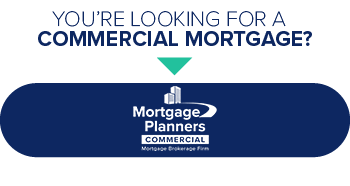If you’ve spent any amount of time researching mortgage rates, you’ll likely have seen references to these types of products: insured, insurable and uninsured.
It’s important to know the difference between the three and which one will apply to your situation as rate competitiveness can vary greatly depending on the mortgage type.
Below we’ll explain the key differences between the three and how they can affect the best mortgage rates that may be available to you.
Insured Mortgages
Insured mortgages are generally those where the buyer is making a down payment of 20% or less. In other words, mortgages where the loan-to-value is between 80.01% and 95%, or high-ratio mortgages.
By Canadian law, in order for financial institutions to provide these types of mortgages they must be default-insured by one of Canada’s three main default insurance providers: Canada Mortgage and Housing Corporation (CMHC), Sagen or Canada Guaranty.
The cost of the insurance is typically rolled into the total mortgage amount, meaning it doesn’t have to be paid upfront. However, certain provinces charge tax on the insurance amount, which must be paid at the time of closing.
Rates for insured mortgages are typically among the lowest available since the insurance provider is taking on the risk of default rather than the lender, in turn lowering the lender’s cost of funding.
Some restrictions that apply to default-insured mortgages include:
- Maximum property value of $1 million (though the Liberals promised in the last election to increase this threshold to $1.25 million)
- Not available on non-owner-occupied properties (such as rentals and other investment properties)
- Not available on refinances
- Property must be located in Canada
- Maximum 25-year amortization
- Mortgage stress test applies
- Standard debt qualification ratios apply
Insurable Mortgages
Insurable mortgages are similar to insured mortgages, but the borrower does not pay the premium. Instead, lenders are responsible for insuring these mortgages, which is generally done through back-end bulk insurance.
This allows lenders to price insurable mortgages more competitively, though typically not as low as insured mortgages, unless the loan compared to the value of the home is less than 65%.
Insurable mortgages are still considered lower risk because they meet certain eligibility requirements set out by the insurer, such as the loan-to-value ratio and the borrower's credit score.
Some restrictions that apply to insurable mortgages include:
- The purchase price must not exceed $1 million
- Only available on mortgages with a loan-to-value of 80% or less
- Only available for purchases and switches (transfers), but not refinances
- The property must be owner-occupied or a small rental (2-4 units)
- Maximum 25-year amortization
- Mortgage stress test applies
- Standard debt qualification ratios apply
Uninsured Mortgages
Uninsured mortgages are loans that cannot be guaranteed by the government or private insurers. This includes those that do not fall within the guidelines of insured or insurable mortgages, and refinances, which are always uninsured.
This means that the lender assumes all of the risk in the event of default by the borrower, which tends to make uninsured rates the highest of the three.
Some specifics of uninsured mortgages include:
- The purchase price can exceed $1 million
- Amortizations can exceed 25 years
- Can include single-unit rental properties
- Available for refinances
- Mortgage stress test doesn’t apply when using non-federally regulated financial institutions, such as private lenders and certain credit unions
As you can see, it’s important to understand the different types of mortgages and the restrictions or limitations that each entails.
Homebuyers should carefully consider their options and consult with a mortgage professional who can help to determine the best option for their needs.



